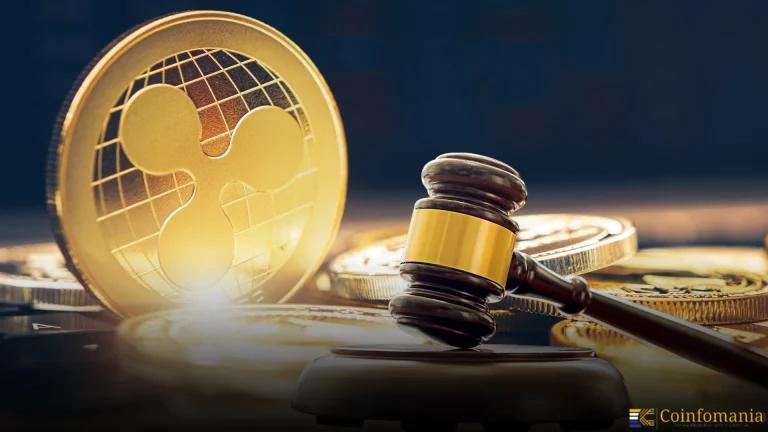Cryptocurrency Regulations in India
India is slowly warming up to cryptocurrency, curious but careful, not rushing in or shutting it out completely. The Indian government is making the rules to make the crypto market transparent and safe while keeping a tight grip on risks like fraud and money laundering. By March 2025, understanding these rules is super important for […]

India is slowly warming up to cryptocurrency, curious but careful, not rushing in or shutting it out completely. The Indian government is making the rules to make the crypto market transparent and safe while keeping a tight grip on risks like fraud and money laundering. By March 2025, understanding these rules is super important for investors, businesses, and everyday users who want to play it safe in India’s buzzing crypto scene. Indians are some of the biggest crypto fans in the world, and these shifting policies could open new doors—or set strict limits—for local startups and big global companies eyeing the market. The Reserve Bank of India (RBI), the Ministry of Finance, and the Securities and Exchange Board of India (SEBI) are the main players calling the shots on this crazy journey.
Historical Context
India’s crypto story kicked off with suspicion. In 2018, the RBI banned banks dealing with crypto, worried about shady deals and financial chaos. That changed in 2020 when the Supreme Court tossed the ban out, saying it was too harsh, giving crypto a lifeline. Since then, trading boomed, but rules stayed fuzzy.
What’s shifted?
By 2022, the government slapped a 30% tax on crypto gains and a 1% TDS on trades, cooling the hype.
Why did it change?
They saw millions jumping in—India hit 270 million crypto users in 2024, per estimates—and wanted control, not chaos.
Will it evolve more?
With a discussion paper delayed from 2024 to 2025, and global crypto vibes shifting (like Trump’s pro-crypto push in the US), India is rethinking its stance, hinting at clearer rules soon.
Regulatory Framework
India’s crypto rules come from a trio of big players. The RBI, the country’s central bank, keeps crypto off the legal tender list and pushes exchanges to register as virtual asset service providers (VASPs). The Ministry of Finance sets the tax tone—since 2022, it’s been a flat 30% on profits and 1% TDS on trades over ₹50,000. The SEBI chips in when crypto looks like an investment, eyeing tokens that mimic stocks.
Exchanges need to sign up with the Financial Intelligence Unit (FIU) under the 2023 Prevention of Money Laundering Act (PMLA) update. This means strict AML and KYC checks—knowing who’s trading and flagging odd moves—to curb dirty money. Taxes are tough: no deductions except buying costs, and losses can’t offset other income. For ICOs, STOs, and NFTs, it’s a gray zone—SEBI might step in if they’re securities, but most float without clear rules.
In March 2025, the Finance Ministry hinted at tweaking this setup, spurred by global shifts. A proposed bill from 2021, aiming to ban private crypto while pushing a digital rupee, still lingers in limbo. India is playing catch-up, blending local needs with international norms as crypto keeps growing.
India Crypto Policies
India doesn’t let crypto pass as real money; only Indian Rupees count for payments, so using Bitcoin at a store is a no-go. But folks can own and trade it, and platforms like WazirX and CoinDCX operate legally with FIU nods. Crypto mining is legal too, if miners stick to regular business laws, without affecting any government laws.
The RBI is also testing a digital rupee, with pilots from 2022 now under review in 2025, aiming for a state-backed crypto twist. In 2024, Binance paid ₹188.2 million for past slip-ups after registering with the FIU. Even one of the largest exchanges, Coinbase, is making a second innings after the initial ban. India’s stance is firm but not frozen—regulators want growth without gambling on stability, watching global moves like the US’s crypto-friendly signals in 2025.
India’s Approach to Crypto Innovation
India’s government isn’t rushing to hug crypto, but it’s not ignoring it either. The RBI’s National Blockchain Strategy, since 2021, backs tech trials, like supply chain tracking, while a 2025 discussion paper hints at a future sandbox for crypto ideas. Businesses can’t take crypto payments, but trading and remittance platforms thrive—over 10% of Indians held crypto in 2024, per Statista, fueled by cheap overseas transfers.
The Finance Ministry’s February 2025 review, sparked by global shifts, suggests openness to innovation if risks stay low. The India Blockchain Forum pushes for growth, and firms like Mudrex see hope in softer rules. India’s balancing act—tech progress versus tight control—could make it a crypto hub, but only if regulators loosen the reins a bit.
Notable Challenges and Issues
India’s crypto rules aren’t smooth sailing. The RBI, SEBI, and FIU split duties, but holes, like no clear NFT guidelines, leave users guessing. Enforcement’s a slog; crypto’s sneaky, borderless nature trips up trackers hunting tax dodgers or launderers, even with PMLA in play. Regulators can’t keep up with the market’s speed.
People’s views differ too. Young traders chase crypto riches—India is second globally in adoption, says Chainalysis—but older folks and banks balk, burned by scams like WazirX’s $230 million hack in 2024. High taxes and unclear laws spook some, while others see gold in the chaos. The government’s got a puzzle: spark innovation without unleashing trouble, all while public trust wobbles.
Key Regulatory Trends and Future Outlook
In 2025, India’s crypto scene got a jolt. Finance Ministry review in February 2025, nudged by global pro-crypto waves (like Trump’s US push), delayed a 2024 discussion paper for a fresh look. March saw whispers of multi-regulator talks, with SEBI pitching a shared framework. Taxes might ease, and a digital rupee could roll out by 2026.
What’s next?
Rules might tighten on AML but soften on trading bans, luring firms like Coinbase back after 2023’s FIU crackdown. India’s G20 role in 2023 set a tone for global sync—its moves could nudge Asia’s crypto path. With 270 million users, India is a heavyweight; clearer laws could boost its global clout, blending caution with opportunity.
Conclusion
India’s crafting a crypto rulebook that’s strict yet hopeful, eyeing 2025 for clarity. It’s a big deal for investors, businesses, and users riding a wild market wave. With higher adoption, the country could lead Asia’s digital charge if it nails the balance. Keeping tabs on shifts, through solid sources, is key in this fast game.
FAQ
1. Is crypto legal in India?
Yes, for trading and holding, not payments.
2. Are crypto gains taxed?
Yes, 30% plus 1% TDS since 2022.
3. Can businesses accept crypto?
No, only Indian Rupees work in business set up.
4. Is mining allowed?
Yes, under basic laws.
5. Who runs the show?
RBI, SEBI, and FIU split it.
6. Any legit platforms?
WazirX and CoinDCX are FIU-registered.
7. Is India building its own digital money?
The RBI has been testing a digital rupee since 2022, with plans for a 2026 launch.
Follow us on Google News
Get the latest crypto insights and updates.
Related Posts

Ripple Highlights Custody as Key to $18.9T Tokenized Assets by 2033
Shweta Chakrawarty
Author

Hong Kong SFC Issues New Custody Rules for Crypto Platforms
Shweta Chakrawarty
Author

South Korea and Vietnam eye $150B trade despite Trump tariff
Shweta Chakrawarty
Author